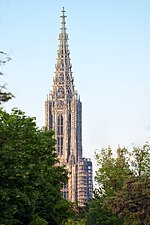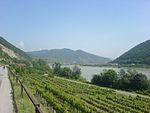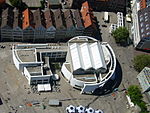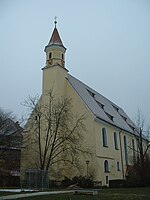Ulm Ost station
Pages with no open date in Infobox stationRailway stations in Ulm

Ulm Ost station is a railway station in the eastern part of the town of Ulm, located in Baden-Württemberg, Germany.
Excerpt from the Wikipedia article Ulm Ost station (License: CC BY-SA 3.0, Authors, Images).Ulm Ost station
Marchtalerstraße, Ulm Mitte
Geographical coordinates (GPS) Address External links Nearby Places Show on map
Geographical coordinates (GPS)
| Latitude | Longitude |
|---|---|
| N 48.4071 ° | E 9.9948 ° |
Address
Ulm Ost
Marchtalerstraße
89073 Ulm, Mitte
Baden-Württemberg, Germany
Open on Google Maps









